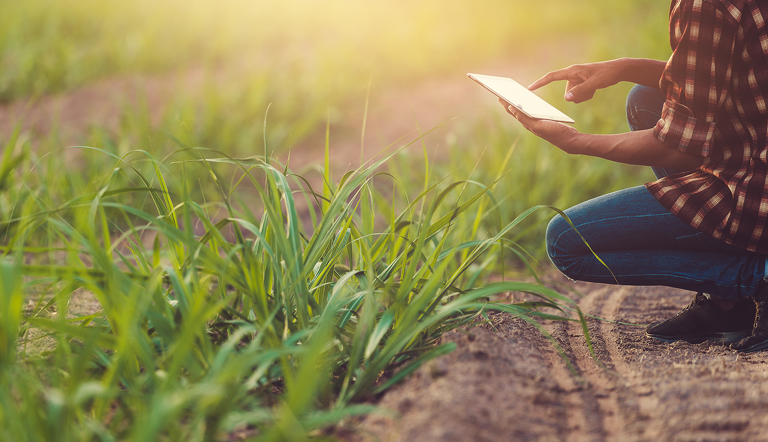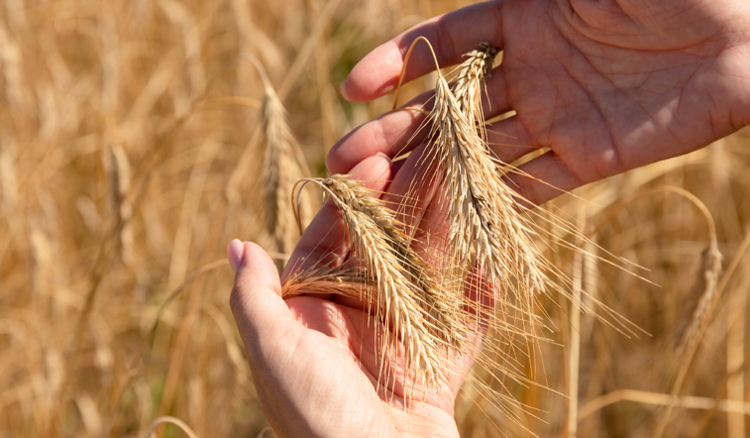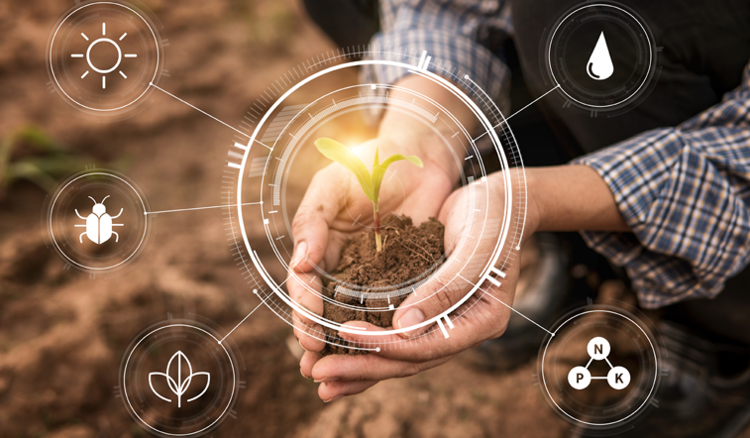
2022 trends and challenges in the agricultural industry

By 2050 we will need to produce 70 percent more food. Trends emerging in 2022 show how innovative solutions will help growers meet this need and how precision agriculture and robotic systems will allow farms to be more profitable, efficient, safe, and environmentally friendly.
1. Agricultural technology
Leveraging advancements in technology has been shown to reduce the environmental impact of agricultural operations and increase productivity. As a result, the agricultural sector is increasingly embracing AgTech.
Automation:
Innovations we’re more familiar with include drone development and sensors (for light, humidity, temperature, soil moisture, etc). New innovations in farm management include seeding, weeding and harvesting robots, and autonomous tractors:
- Some of the latest generation seed-sowing robots are solar-powered, others are electronic - all have lane-guidance systems and space the seed quickly with total, measured precision.
- The accuracy of weeding robotics can reduce pesticide usage by 90%, spraying herbicides only where needed at exactly the right dosage thereby reducing the risk of resistance.
- Harvest robots are calibrated to avoid bruising, damage to fruit, and to meet the quality required by the grower.
- Autonomous tractors may be pre-programmed or remote-controlled. They’ve been shown to improve efficiency and agricultural output in row crop farming.
Artificial intelligence, machine learning and big data:
AI, ML and data analytics can be used to optimise sustainable agriculture practices while at the same time increasing quality and yield through data collection, analysis and deployment of agile solutions. For example, these systems can help growers measure the effectiveness of crop irrigation, ensuring the optimisation of irrigation systems and early detection of leaks. Similar systems can be used in crop protection, identifying infested plantings and optimising the mix of protection required, cutting costs, increasing yields and lowering the chance of resistance.
AgriTech also makes it easier to collect the right data at the right time, and use it to improve production, delivery and sales, or from a wider agricultural industry point of view, to address factors affecting food security, food insecurity, natural resource management, poor farming practices, etc.
Blockchain for agriculture
Conscious consumerism has become clearly linked to sustainable agriculture and natural resource management. There is increasing demand to know exactly where food comes from. As a result, many agri businesses are searching for supply chain management software to improve the traceability of the entire farming supply chain.
Bacancy is a software development company offering digital and consulting services. Their agricultural division aims to help farmers improve crop yields, increase productivity and enhance operational efficiency with “smart” farming solutions. In their 2022 Agriculture Technology Trends analysis, they note that real-time use cases of Agriculture Blockchain technology are:
- Food Traceability
- Transparency in the food supply chain
- Agricultural insurance for farmers
- E-commerce for agro-trades
- Agricultural subsidies
Blockchain for agriculture has already reached our shores with FoodPrint. This Cape Town-based “tech-for-good” startup has simplified collection of production and harvest data for smallholder farmers and connects them to market opportunities and services “using a blockchain-enabled farm-to-fork supply chain platform”.
This helps advance the conscious consumer’s cause of supporting sustainable farming and locally grown agricultural products, which in turn can immensely benefit small-scale farmers of fruit and vegetables and other crops, as well as economic growth.

2. Food Security
Globally, COVID-19 has pushed more people into poverty and made the poor poorer. Added to supply-chain issues, there is real concern about supplies of staples that the poor rely on.
Gro Intelligence analyses agricultural, climate, and economic data. Their watchlist for the major themes for 2022 notes that food inflation will continue and wheat supplies will remain tight (due to drought in the US and Canada, as well as sanctions against Russia and the war in Ukraine). “For wheat, the global supply and demand balance is the tightest it has been in many years”. They also say, “Southern Hemisphere harvests may be needed to relieve the pressure, as well as abundant Northern Hemisphere spring wheat harvests in 2022.”
Gro Intelligence also warns of continuing high prices for vegetable oil (due to supply disruptions in the Black Sea and Malaysia) and sugar (due to drought in south-central Brazil).
Hostilities in Ukraine have also given rise to a worldwide shortage of fertiliser.
Food insecurity is a global concern and ideas that address the factors affecting food security as well as sustainable agriculture will come to the fore.
An agricultural development to address the challenges of food security in Africa
The World Bank recently released a report looking at the role farming insects can play in both food security and climate-smart agriculture: Insect and Hydroponic Farming in Africa: The New Circular Food Economy.
The report found that two billion people eat insects harvested in the wild, and suggests that farming them for food at scale makes a lot of sense. (“African insect farming could generate crude protein worth up to US$2.6 billion and biofertilizers worth up to US$19.4 billion [and] enough protein meal to meet up to 14% of the crude protein needed to rear all the pigs, goats, fish, and chickens in Africa”.)
According to the report:
- Insects can be farmed without arable land.
- Insects can be grown within a couple of weeks.
- The food they need to grow comes from food waste.
- Insect waste can be used as fertilizer.
- Insects can be used as animal feed, cutting farmer expenses, and reducing greenhouse gases generated from farming and transporting other feed such as soybeans.
- People can eat insects or sell them for income, increasing food security.
For more on farming insects and the role they can play in the food system, take a listen to the “Farming the Future: Insects” episode on the Table for 10 Billion podcast.

3. Regenerative Agriculture and Precision Farming
Regenerative agriculture, like conservation farming, espouses crop rotation, stubble retention and minimal soil disturbance. Where it diverges, is that it also incorporates the use of cover crops and sustainable fertilizers and pesticides. Regenerative farming focuses on soil health, moisture retention and biodiversity, as well as the socio economic well-being of communities and sustaining natural resources.
Precision agriculture, which includes many of the themes addressed in the AgriTech section above, can support and maximise regenerative agricultural practices. Farmers employing precision farming methods and AgriTech are better able to monitor field conditions (from anywhere) and select the best options for necessary actions based on data. It allows them to monitor, map, measure and analyse in order to expedite precise sowing, harvesting, irrigation, and application of fertilizers and pesticides at a variable rate, increasing quality, yield, profitability, efficiency, safety and sustainability.
Futures Centre is a participatory futures platform that helps track and make sense of change in order to create a more regenerative and just future. In Here Come the Robots: Precision and Regenerative Farming, Futures Centre highlights just a few of the ways that precision agriculture can support regenerative farming:
- Precise application of chemicals will reduce soil damage and pollution of watercourses;
- Automated sowing robots can work to a 2cm accuracy (using RTK navigation) meaning that every seed can be placed precisely and mapped. This can support multi-cropping practises that can aid natural pest control and improve biodiversity and yields.
- Ultra-light tractors can help eliminate soil compaction problems;
- Scouting and crop care technologies can help optimise irrigation, increasing water efficiency.
Of course, making these technologies affordable for small-scale producers as well as large commercial growers is the next step and will hopefully be a trend we’ll see in the future beyond 2022.